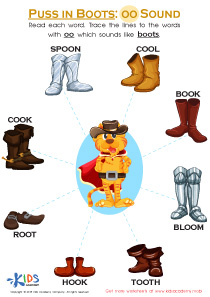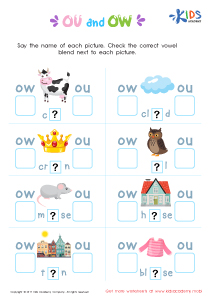Vocabulary expansion Vowel Blends Worksheets for Ages 6-8
7 filtered results
-
From - To
Enhance your child's language skills with our "Vocabulary Expansion: Vowel Blends Worksheets" designed for ages 6-8. These engaging, printable worksheets make learning fun by focusing on essential vowel blends. Kids will improve their reading and spelling abilities through a variety of exercises that develop critical thinking and phonics skills. Our worksheets are perfect for home or classroom use, helping young learners recognize and use vowel blends in everyday words. Give your child the foundation they need to excel in reading and writing with Kids Academy's expertly crafted educational materials. Download now to start expanding your child's vocabulary!
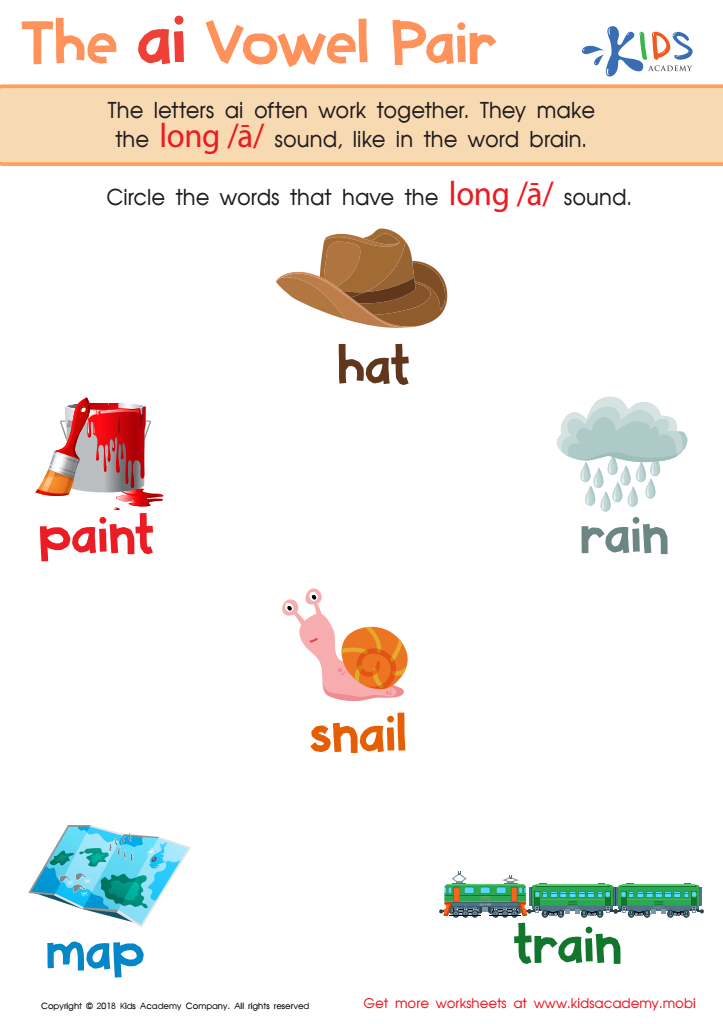

The AI Vowel Pair Worksheet
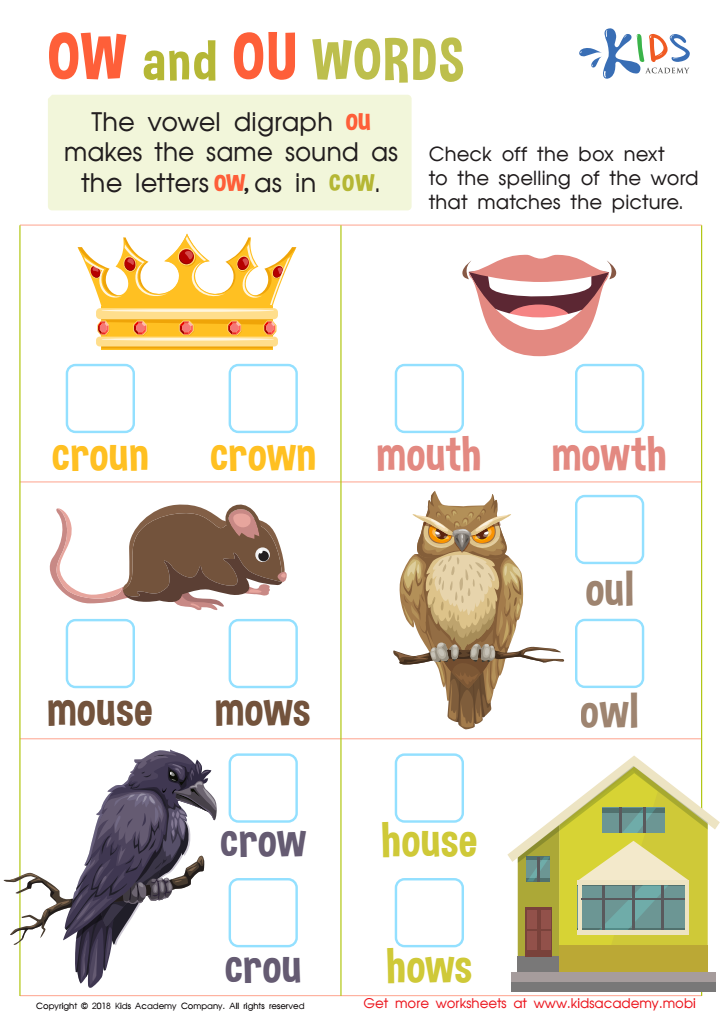

Reading: OW and OU Words Worksheet
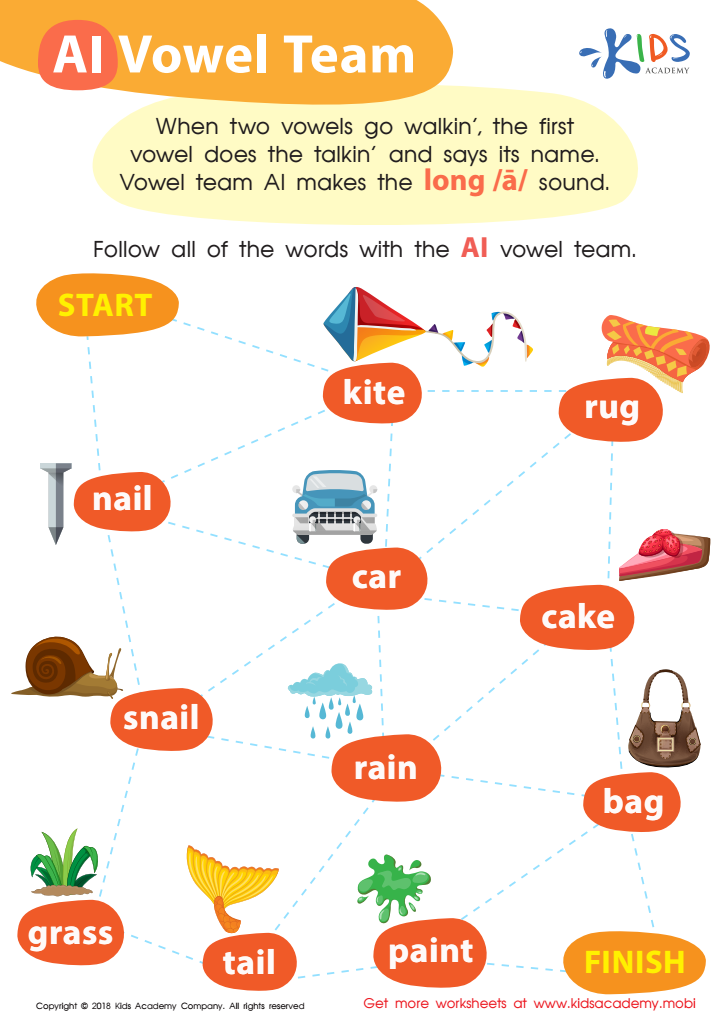

Reading: AI Vowel Team Worksheet
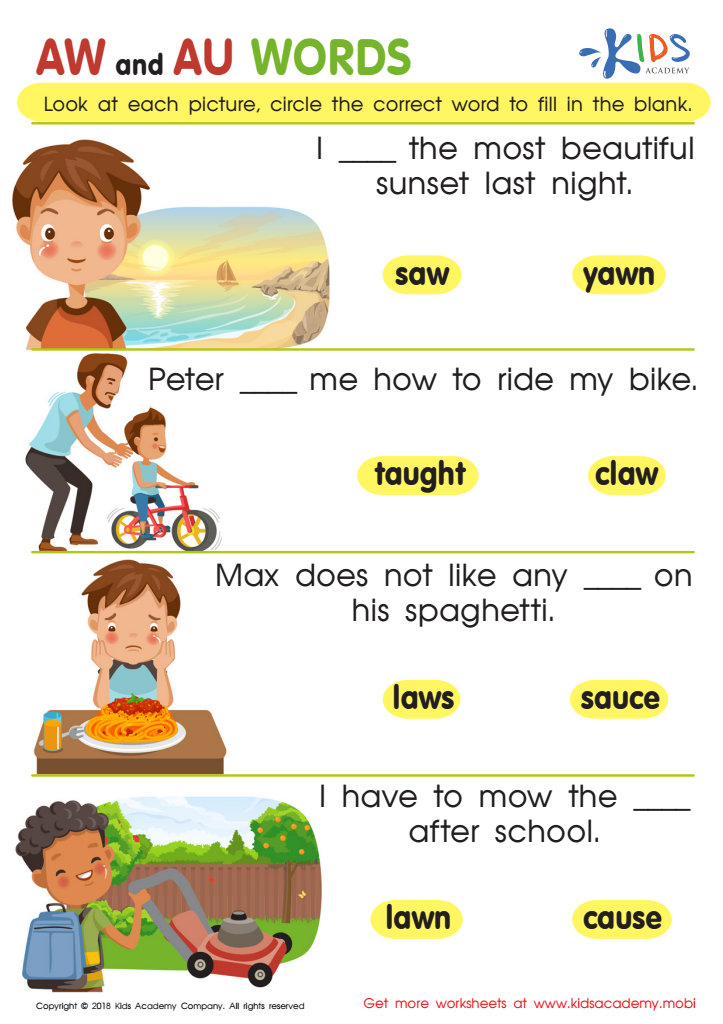

Reading: AW and AU Words Worksheet
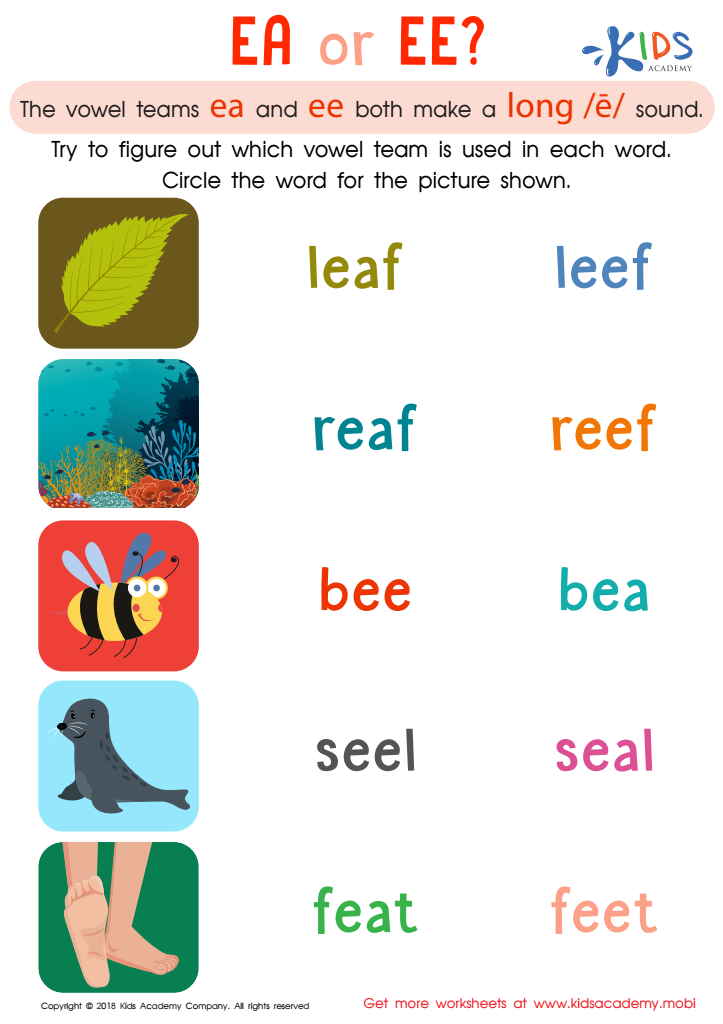

Reading: EA and EE Worksheet
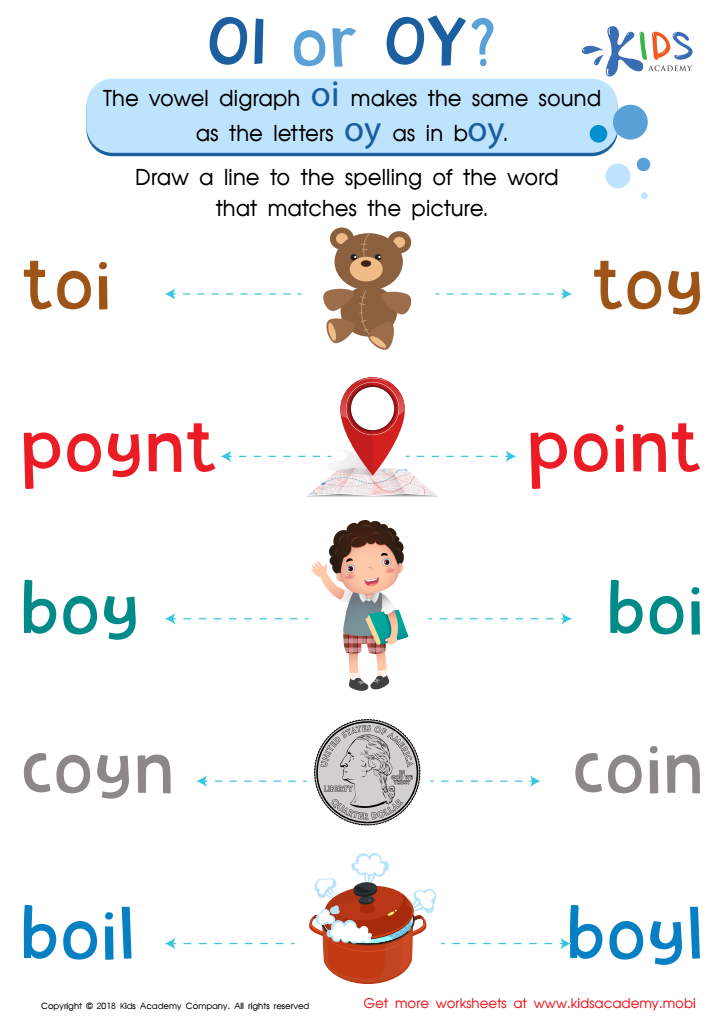

Reading: OI and OY Worksheet


Reading: EA as in Bread Worksheet
Vocabulary expansion, including understanding and utilizing vowel blends, is vital for children ages 6-8 as it lays a foundational role in their literacy development. At this stage, children transition from recognizing simple words to decoding more complex text, and vowel blends play a crucial role in this evolution.
Vowel blends, combinations of adjacent vowels that produce a specific phonetic sound (like 'ea' in "read" or 'ai' in "rain"), help students decode new words effectively. Mastery of these blends supports reading fluency, enhancing the ability to read smoothly with proper intonation. This fluency is crucial for comprehension, as children who don’t struggle with decoding can concentrate on the meaning of the text rather than getting stuck on individual words.
An expanded vocabulary enables children to express themselves more precisely and understand others better. For example, knowing various words related to emotions helps children articulate their feelings, improving social interactions.
Additionally, exposure to a rich vocabulary, including vowel blends, fosters a love for reading and learning. As children successfully read more complex texts, their confidence and motivation increase, setting the stage for lifelong literacy and academic success. Therefore, both parents and teachers should invest time and resources in activities and instruction that promote vocabulary expansion and vowel blends understanding.

 Assign to My Students
Assign to My Students












